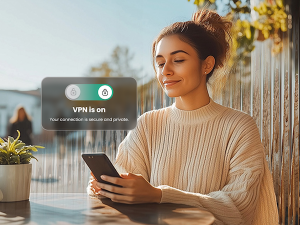After 17 months and billions in campaign spending, it was up to the scores of American people who flooded churches, schools, homes and auditoriums to cast their ballots for the future of American leadership. But amidst the highs and lows of election night, there was an ongoing conversation on how our votes were being counted.
As results slowly rolled in from the East Coast, voters continued to struggle with long lines and faulty machinery in key battleground states, prompting debates on the efficiency of the US voting process. In an age where American Idol results can be instantaneously transmitted over a mobile device, why are we still feeding paper ballots into machines that look like props from the movie Hackers?
On the one hand, countries like Canada, Norway and Australia have already experienced success with their adoption of online voting systems, and proponents say going digital will boost voter turnout and Election Day efficiency. On the other, naysayers cite hacking, malware, and other security threats as deal breakers that could threaten the backbone of American democracy.
So what are the facts behind this debate? Below, I’ve outlined a few of the key arguments for and against online, email, and electronic voting systems, to help users at home move beyond the pre-election campaign hype.
Electronic Voting Machines: Better or Worse than Paper Ballots?
Let’s get one thing out of the way: Since there have been elections, there have been people tampering with votes. Given this, experts are justifiably concerned with any technology that could introduce new points of access to the data stored during an election. Nevertheless, six states now use electronic voting machines exclusively, and even notorious battleground states Ohio and Florida have made the move towards paperless votes.
The concern is that when there is no physical ballot, it becomes next to impossible to determine if there has been tampering – especially in the case of a close election. The contested 2000 Bush-Gore race comes to mind as an example of the stark importance of reliable election machinery. Even this year, Pennsylvania voting machines were taken out of service after being captured on video changing votes from one candidate to another.
Still, most of these machines now supply a paper trail to guard against tampering, and a vast majority undergoes frequent, mandatory testing. The machines are also not connected to the Internet and are segregated from any network-connected devices. In terms of physical security, the machines themselves are secured with locks and tamper-evident seals, and they’re heavily protected when transported to and from polling places.
Online Voting: Ongoing Privacy and Security Concerns
Will our presidential elections ever go the way of American Idol? One example we witnessed during this election cycle was in New Jersey. With so many affected by Hurricane Sandy, officials had to act quickly to establish an alternative voting method for displaced citizens. But as Election Day loomed, the system was soon blamed for a slue of issues that could have resulted in an “insecure, illegal nightmare.” In comparison to the risks associated with touch-screen voting, many argue that email voting seems downright insane.
As Forbes laid out, on one side, unencrypted emails can be spoofed or tampered with. On another, computers used to send or receive the emails can be compromised to change or block a voter’s choices. On top of that, the receiving PCs will by default need to open attachments sent by unknown users to tally the votes – one of the most common causes of malware infections.
Nevertheless, there may be hope. In a recent interview with NBC, McAfee’s Pat Calhoun argued that the biggest hurdle to secure online voting is not security technology, but the creation of a national, government-run digital ID to ensure voter identification. This type of ID is already required for members of the military and many federal employees, but the concern is that American voters would not allow a broader measure to pass due to its implications for individual privacy. That being said, if such a system were set in place, we could in theory move away from a practice like email voting, and start to develop a secure online system that relied on the national ID.
McAfee VP and Chief Privacy Officer Michelle Dennedy also elaborates more on these key points in a recent interview with Bloomberg news, delving into the differences between sensitive transactions like banking, which have already been taken online, and challenges specific to the online voting process.
The Bottom Line
While online voting systems can’t be written off, ongoing cybersecurity challenges don’t bode well for the immediate future of these platforms. There is still significant progress to be made over the next 4 years and beyond, and we’ll be keeping a close eye on emerging developments.
Did you use a touch-screen or email ballot during this year’s election? Let us know your take on this topic in the comments below, and be sure to join the conversation on Twitter with @McAfee.











